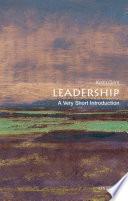
The Koran: A Very Short Introduction
The Koran has constituted a remarkably strong core of identity and continuity for a religious tradition that is now in its fifteenth century. This Very Short Introduction explores the significance of the Koran both in the modern world and in traditional Muslim culture. Michael Cook provides a lucid and direct account of the Koran as codex, as scripture, as liturgy, and as the embodiment of truth, and examines its means of formation and dissemination. He also discusses issues of interpretation for certain key verses, demonstrating that fecundity of the text for readers throughout the world. ABOUT THE SERIES: The Very Short Introductions series from Oxford University Press contains hundreds of titles in almost every subject area. These pocket-sized books are the perfect way to get ahead in a new subject quickly. Our expert authors combine facts, analysis, perspective, new ideas, and enthusiasm to make interesting and challenging topics highly readable.
- ISBN 13 : 0191578274
- ISBN 10 : 9780191578274
- Judul : The Koran: A Very Short Introduction
- Pengarang : Michael Cook,
- Kategori : Religion
- Penerbit : OUP Oxford
- Bahasa : en
- Tahun : 2000
- Halaman : 176
- Google Book : https://play.google.com/store/books/details?id=rUEe1twiimUC&source=gbs_api
-
Ketersediaan :
ABOUT THE SERIES: The Very Short Introductions series from Oxford University Press contains hundreds of titles in almost every subject area. These pocket-sized books are the perfect way to get ahead in a new subject quickly.









